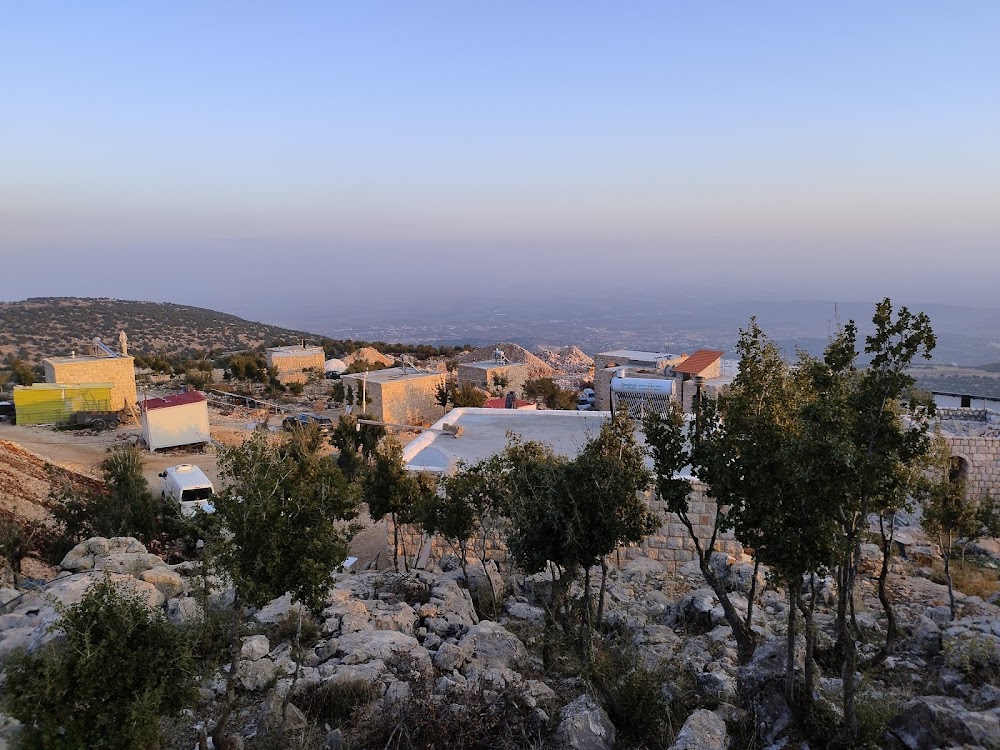Roman Ruins of Anjar (آثار عنجر)
Overview
Nestled in the picturesque Beqaa Valley of Lebanon, the Roman Ruins of Anjar stand as a captivating testament to ancient urban planning and the region's rich history. Derived from the Arabic term "Ain Gerrha," meaning "source of Gerrha," Anjar is a unique historical site that distinguishes itself from Lebanon's other ancient relics. Unlike the Phoenician ruins found throughout the country, Anjar primarily reflects Roman influence and later developments during the Umayyad Caliphate.
Established in the early 8th century by the Umayyads under Caliph Walid I, the city was envisioned as an oasis of commerce and culture. Anjar offers a rare glimpse into an Umayyad city meticulously planned and constructed according to Roman city planning principles. With its grid-like streets, grand colonnades, and impressive public buildings, Anjar was built quickly and purposefully to serve as a flourishing economic and strategic hub.
One of Anjar's most striking features is its remarkably preserved city grid. Visitors can stroll along the Cardo Maximus, the main north-south thoroughfare, and the Decumanus Maximus, the primary east-west artery, which divides the city into four quadrants. Framed by colonnades that once supported roofed walkways, these roads provide a clear picture of the city's layout and the architectural ingenuity of its builders. This careful planning facilitated the efficient movement of people and goods, underscoring Anjar's significance as a vital trading center in the region.
At the heart of Anjar lies the Grand Palace, a sprawling complex that served as the residence of the Umayyad rulers. The palace's design showcases a blend of Roman and Islamic architectural styles, evident in its expansive courtyards, intricate mosaics, and robust fortifications. Nearby, the Small Palace and the public baths further illustrate the city's grandeur and the high quality of life enjoyed by its inhabitants. The Baths of Anjar, akin to Roman baths, highlight the cultural significance of social bathing and relaxation, featuring cold, warm, and hot rooms constructed with an advanced heating system known as the hypocaust.
Beyond the palaces and baths, Anjar boasts numerous other fascinating structures. The two mosques within the city exemplify the Umayyad era's religious life, while the shops and residential quarters reveal the everyday activities and vibrant commerce that flourished here. Remarkably, many foundations of buildings have survived, providing a tangible sense of the ancient city's scale and complexity.
Strategically located along vital trade routes linking Damascus to the Mediterranean coast, Anjar's positioning facilitated the flow of goods and attracted a diverse mix of cultures, contributing to its vibrant and cosmopolitan nature. However, Anjar's prosperity was relatively short-lived; the city was abandoned shortly after the fall of the Umayyad dynasty in the mid-8th century. This abandonment paradoxically contributed to its preservation, as it was not extensively remodeled or repurposed over the centuries.
Designated a UNESCO World Heritage site in 1984, the Roman Ruins of Anjar offer invaluable insights into early Islamic urbanism and the cultural synthesis of Roman and Islamic traditions. For modern visitors, exploring Anjar feels like stepping back in time, providing a unique opportunity to witness firsthand the grandeur of a city that once thrived at the crossroads of civilizations.
While visiting Anjar, tourists can also take time to enjoy the stunning Beqaa Valley, known for its fertile lands and vineyards. This region is one of Lebanon's most important agricultural areas, offering a perfect complement to a historical excursion with its scenic landscapes and delicious local delicacies. The juxtaposition of ancient ruins and lush vineyards creates a unique cultural experience, blending history, nature, and modern-day Lebanese hospitality.
In conclusion, the Roman Ruins of Anjar represent more than just ancient stones; they symbolize a confluence of civilizations, a beacon of urban planning, and a narrative of historical significance encapsulated in a once-thriving city. Whether you are a history enthusiast, an archaeology aficionado, or simply a curious traveler, Anjar promises an enriching experience that continues to inspire awe and admiration centuries after its inception.




